S & E Asia 98 - Myanmar 38: Mandalay 8 - Silver & gold work and Myanmar wine
Apr 10, 2022 10:57:03 #
This set brings scenes from our visit to two work shops: At a silversmith and at the King Galon Gold Leaf Company, both in the city of Mandalay as well as a quick glimpse of our restaurant on Sagaing Hill. This set holds some of my lowest quality images of the entire trip, taken in the two workshops. I was contemplating not to include these but thought that the subjects and work methods were sufficiently interesting and highly unusual for our western eyes and thus would warrant inclusion despite the lower quality. I hope that you can still enjoy this presentation. I am citing below briefly the various processes, gleaned from Wikipedia and other sources.
You can find the location of the King Galon Gold Leaf Company at the upper right side on the attached map of Mandalay.
SILVERSMITHS
A silversmith is a metalworker who crafts objects from silver. The terms silversmith and goldsmith are not exactly synonyms, while the techniques, training, history, and guilds are or were largely the same, the end product may vary greatly as may the scale of objects created.
Materials & Techniques - Silversmiths saw or cut specific shapes from sterling and fine silver sheet metal and bar stock, and then use hammers to form the metal over anvils and stakes. Silver is hammered cold (at room temperature). As the metal is hammered, bent, and worked, it 'work-hardens'. Annealing is the heat-treatment used to make the metal soft again. If metal is work-hardened, and not annealed occasionally, the metal will crack and weaken the work. After forming and casting, the various pieces may be assembled by soldering and riveting. During most of their history, silversmiths used charcoal or coke fired forges, and lung-powered blow-pipes for soldering and annealing. Modern silversmiths commonly use gas burning torches as heat sources. A newer method is laser beam welding. Silversmiths may also work with copper and brass, especially when making practice pieces, due to those materials having similar working properties and being more affordable than silver.
GOLDBEATING
Goldbeating is the process of hammering gold into an extremely thin unbroken sheet for use in gilding. 5,000 years ago, Egyptian artisans recognized the extraordinary durability and malleability of gold and became the first goldbeaters and gilders. They pounded gold using a round stone to create the thinnest leaf possible. Except for the introduction of a cast iron hammer and a few other innovations, the tools and techniques have remained virtually unchanged for thousands of years.
Rolling - Karat and color of gold leaf varies depending on the amount of silver or copper added to the gold. Most goldbeaters make 22 karat leaf. The gold and its alloy are put in a crucible and melted in a furnace. The liquid gold is poured into a mold to cast it into a bar. The bar of gold is put through a rolling mill repeatedly. Each time through the mill, the rollers are adjusted closer and closer to each other, to make the gold thinner and thinner. The bar is rolled to a thickness of 25 micrometres (1⁄1000 in).
Beating - After rolling, the ribbon of gold is cut into one-inch squares. The first step in the beating process is called the cutch. The cutch is made up of approximately 150 skins. In the early days of the trade, ox intestine membrane (Goldbeater's skin) was used to interleave the gold as it was beaten. Today other materials, such as Mylar, are used. Using wooden pincers, the preparer picks up each square of gold and places it in the center of each skin. When the cutch is filled with the small gold squares, it is wrapped in several bands of parchment which serve to hold the packet together during the beating. Parchment is still the best material known to withstand the hours of repeated hammer blows needed to beat the gold. - The gold is beaten on a large, heavy block of marble or granite. These stone blocks were sometimes placed on top of a tree trunk set deep into the ground. This created greater resiliency for the hammer. Beating of the cutch by hand takes about one hour using a fifteen-pound hammer. The goldbeater instinctively follows a pattern and sets up a rhythm, striking the packet with up to seventy strokes a minute. The packet is rotated and turned over to ensure that the gold inside expands evenly in all directions. The original small squares of gold are beaten until they have expanded to the outer edges of the four inch square cutch. The gold is taken out of the cutch and each piece is cut into four pieces with a knife. Using the pincers, these squares of gold are put into a second packet called the shoder, which has approximately 1,500 skins. The shoder is beaten for about three hours until the gold has expanded to a five-inch square.
Packaging - The gold is taken out of the shoder and placed on a leather-covered surface. The gold is thin enough now that the cutter can simply blow on it to flatten it out. Using a wooden implement called a wagon, the gold is quickly cut into four pieces and immediately placed in a packet called a mold for the final beating. The wagon has sharp cutting blades, traditionally made from malacca cane (rattan). The mold contains 1,500 pieces of gold. Before the mold is filled with gold, the skins are coated with a gypsum powder. This process prevents the delicate gold leaf from sticking to the skins. The mold is beaten with an 8-pound (3.6 kg) hammer for three to four hours until it has been beaten into a circle about six inches (15 cm) in diameter. The finished leaf forms an unbroken sheet of gold with a thickness of approximately 100 nanometres (1⁄250000 in). After the leaves are taken out of the mold, they are conventionally cut into a three-and-three-eighths-inch (8.6 cm) square and packaged in tissue-paper books containing twenty-five leaves.
The above should provide plenty of detailed information, just in case you have the time and interest, I add two links that you might enjoy:
First link from a "Fellow Traveler" Ursula, with her interesting image material from the same shop we visited:
https://www.ursulasweeklywanders.com/travel/portraits-in-gold-the-king-galon-gold-leaf-workshop-mandalay-myanmar/
Second link to an interview including some images out of Italy with an Italian Goldbeating Master:
https://craftsmanship.net/the-worlds-greatest-goldbeater/#:~:text=Marino%20Menegazzo%20hammers%20gold%20leaf,on%20the%20edge%20of%20extinction.
MYANMAR WINE
For those interested, I also show the label of a wine produced in Myanmar that we consumed at one dinner. Even though I am a fairly avid wine-consumer, I was unaware that Myanmar produces wine. Thus, this was a revelation to me: Yes, Myanmar does produce wine, albeit in small quantities and apparently there are presently only two companies in this business. But they figure that the potential in a country with more than 53 million people is huge. Both companies are located in the hills close to Inle Lake. We will visit that area, but not the wineries themselves, in our last segment of our Myanmar trip covering the Inle Lake. If you are interested to read more on this topic, here is the link to an article on wine-making and its challenges in this tropical location: https://www.irishtimes.com/life-and-style/travel/long-haul/myanmar-on-the-cusp-of-another-revolution-but-this-time-it-s-about-wine-1.4052808#:~:text=Myanmar%20is%20one%20of%20six,needed%20to%20grow%20great%20vines.
Notes
TRIP INFO: Set # 1 provides a brief introduction to THIS SERIES on SOUTH & EAST ASIA. See it at
https://www.uglyhedgehog.com/t-724330-1.html
MYANMAR COUNTRY INFO in set # 61: https://www.uglyhedgehog.com/t-731087-1.html
MANDALAY AREA INFO in set # 91: https://www.uglyhedgehog.com/t-734484-1.html
EARLIER POSTS of this series: Access my topic list at UHH, the new posts are listed in reverse chronological order:
https://www.uglyhedgehog.com/user-topic-list?usernum=45105
Thanks for visiting, I recommend viewing the downloads and look forward to your comments and questions.
.
You can find the location of the King Galon Gold Leaf Company at the upper right side on the attached map of Mandalay.
SILVERSMITHS
A silversmith is a metalworker who crafts objects from silver. The terms silversmith and goldsmith are not exactly synonyms, while the techniques, training, history, and guilds are or were largely the same, the end product may vary greatly as may the scale of objects created.
Materials & Techniques - Silversmiths saw or cut specific shapes from sterling and fine silver sheet metal and bar stock, and then use hammers to form the metal over anvils and stakes. Silver is hammered cold (at room temperature). As the metal is hammered, bent, and worked, it 'work-hardens'. Annealing is the heat-treatment used to make the metal soft again. If metal is work-hardened, and not annealed occasionally, the metal will crack and weaken the work. After forming and casting, the various pieces may be assembled by soldering and riveting. During most of their history, silversmiths used charcoal or coke fired forges, and lung-powered blow-pipes for soldering and annealing. Modern silversmiths commonly use gas burning torches as heat sources. A newer method is laser beam welding. Silversmiths may also work with copper and brass, especially when making practice pieces, due to those materials having similar working properties and being more affordable than silver.
GOLDBEATING
Goldbeating is the process of hammering gold into an extremely thin unbroken sheet for use in gilding. 5,000 years ago, Egyptian artisans recognized the extraordinary durability and malleability of gold and became the first goldbeaters and gilders. They pounded gold using a round stone to create the thinnest leaf possible. Except for the introduction of a cast iron hammer and a few other innovations, the tools and techniques have remained virtually unchanged for thousands of years.
Rolling - Karat and color of gold leaf varies depending on the amount of silver or copper added to the gold. Most goldbeaters make 22 karat leaf. The gold and its alloy are put in a crucible and melted in a furnace. The liquid gold is poured into a mold to cast it into a bar. The bar of gold is put through a rolling mill repeatedly. Each time through the mill, the rollers are adjusted closer and closer to each other, to make the gold thinner and thinner. The bar is rolled to a thickness of 25 micrometres (1⁄1000 in).
Beating - After rolling, the ribbon of gold is cut into one-inch squares. The first step in the beating process is called the cutch. The cutch is made up of approximately 150 skins. In the early days of the trade, ox intestine membrane (Goldbeater's skin) was used to interleave the gold as it was beaten. Today other materials, such as Mylar, are used. Using wooden pincers, the preparer picks up each square of gold and places it in the center of each skin. When the cutch is filled with the small gold squares, it is wrapped in several bands of parchment which serve to hold the packet together during the beating. Parchment is still the best material known to withstand the hours of repeated hammer blows needed to beat the gold. - The gold is beaten on a large, heavy block of marble or granite. These stone blocks were sometimes placed on top of a tree trunk set deep into the ground. This created greater resiliency for the hammer. Beating of the cutch by hand takes about one hour using a fifteen-pound hammer. The goldbeater instinctively follows a pattern and sets up a rhythm, striking the packet with up to seventy strokes a minute. The packet is rotated and turned over to ensure that the gold inside expands evenly in all directions. The original small squares of gold are beaten until they have expanded to the outer edges of the four inch square cutch. The gold is taken out of the cutch and each piece is cut into four pieces with a knife. Using the pincers, these squares of gold are put into a second packet called the shoder, which has approximately 1,500 skins. The shoder is beaten for about three hours until the gold has expanded to a five-inch square.
Packaging - The gold is taken out of the shoder and placed on a leather-covered surface. The gold is thin enough now that the cutter can simply blow on it to flatten it out. Using a wooden implement called a wagon, the gold is quickly cut into four pieces and immediately placed in a packet called a mold for the final beating. The wagon has sharp cutting blades, traditionally made from malacca cane (rattan). The mold contains 1,500 pieces of gold. Before the mold is filled with gold, the skins are coated with a gypsum powder. This process prevents the delicate gold leaf from sticking to the skins. The mold is beaten with an 8-pound (3.6 kg) hammer for three to four hours until it has been beaten into a circle about six inches (15 cm) in diameter. The finished leaf forms an unbroken sheet of gold with a thickness of approximately 100 nanometres (1⁄250000 in). After the leaves are taken out of the mold, they are conventionally cut into a three-and-three-eighths-inch (8.6 cm) square and packaged in tissue-paper books containing twenty-five leaves.
The above should provide plenty of detailed information, just in case you have the time and interest, I add two links that you might enjoy:
First link from a "Fellow Traveler" Ursula, with her interesting image material from the same shop we visited:
https://www.ursulasweeklywanders.com/travel/portraits-in-gold-the-king-galon-gold-leaf-workshop-mandalay-myanmar/
Second link to an interview including some images out of Italy with an Italian Goldbeating Master:
https://craftsmanship.net/the-worlds-greatest-goldbeater/#:~:text=Marino%20Menegazzo%20hammers%20gold%20leaf,on%20the%20edge%20of%20extinction.
MYANMAR WINE
For those interested, I also show the label of a wine produced in Myanmar that we consumed at one dinner. Even though I am a fairly avid wine-consumer, I was unaware that Myanmar produces wine. Thus, this was a revelation to me: Yes, Myanmar does produce wine, albeit in small quantities and apparently there are presently only two companies in this business. But they figure that the potential in a country with more than 53 million people is huge. Both companies are located in the hills close to Inle Lake. We will visit that area, but not the wineries themselves, in our last segment of our Myanmar trip covering the Inle Lake. If you are interested to read more on this topic, here is the link to an article on wine-making and its challenges in this tropical location: https://www.irishtimes.com/life-and-style/travel/long-haul/myanmar-on-the-cusp-of-another-revolution-but-this-time-it-s-about-wine-1.4052808#:~:text=Myanmar%20is%20one%20of%20six,needed%20to%20grow%20great%20vines.
Notes
TRIP INFO: Set # 1 provides a brief introduction to THIS SERIES on SOUTH & EAST ASIA. See it at
https://www.uglyhedgehog.com/t-724330-1.html
MYANMAR COUNTRY INFO in set # 61: https://www.uglyhedgehog.com/t-731087-1.html
MANDALAY AREA INFO in set # 91: https://www.uglyhedgehog.com/t-734484-1.html
EARLIER POSTS of this series: Access my topic list at UHH, the new posts are listed in reverse chronological order:
https://www.uglyhedgehog.com/user-topic-list?usernum=45105
Thanks for visiting, I recommend viewing the downloads and look forward to your comments and questions.
.
1 - At a Silversmith workplace: At the crude open-fire pit inside the workshop, the worker holds a small sheet of silver into the fire to soften the metal
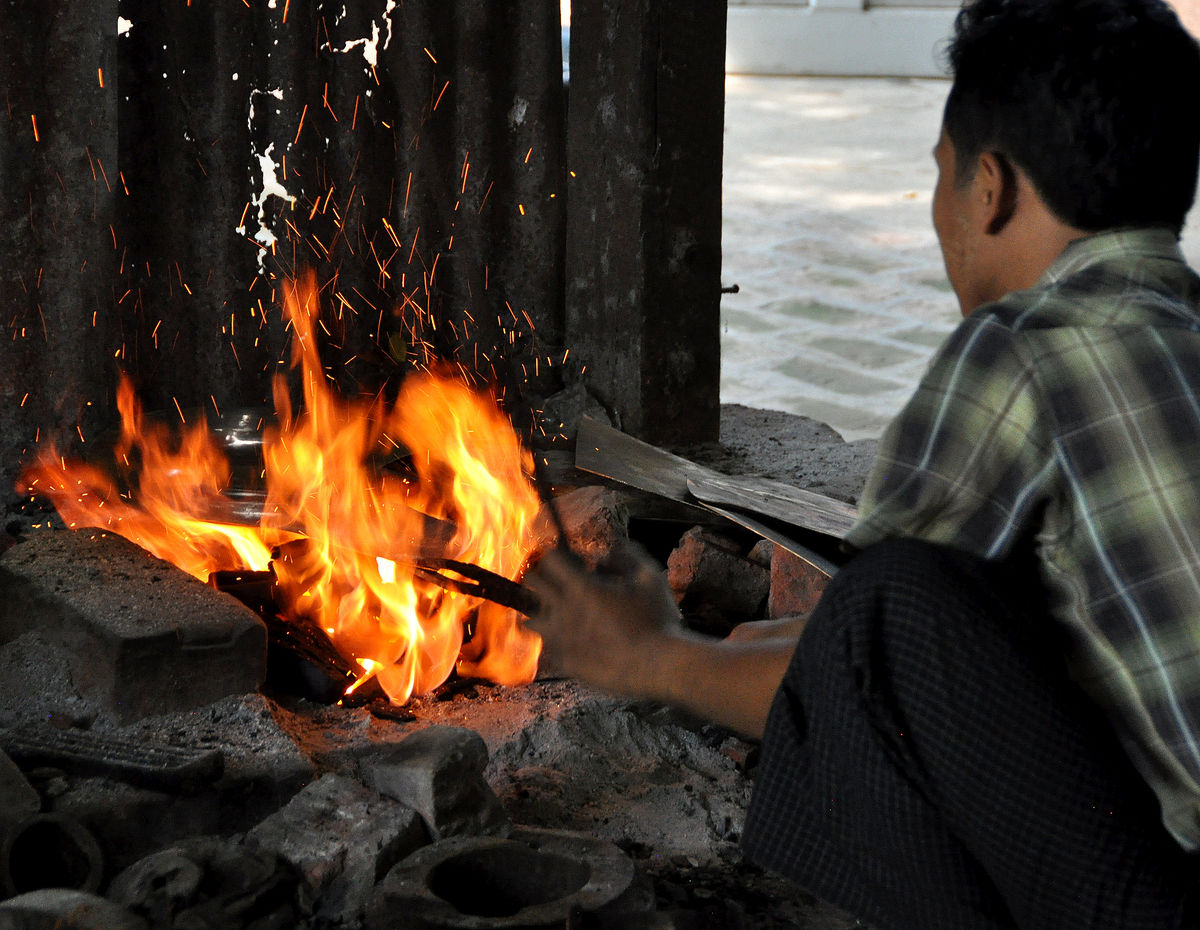
(Download)
2 - Close take of a sheet of silver (the square dark shape) held in the open fire
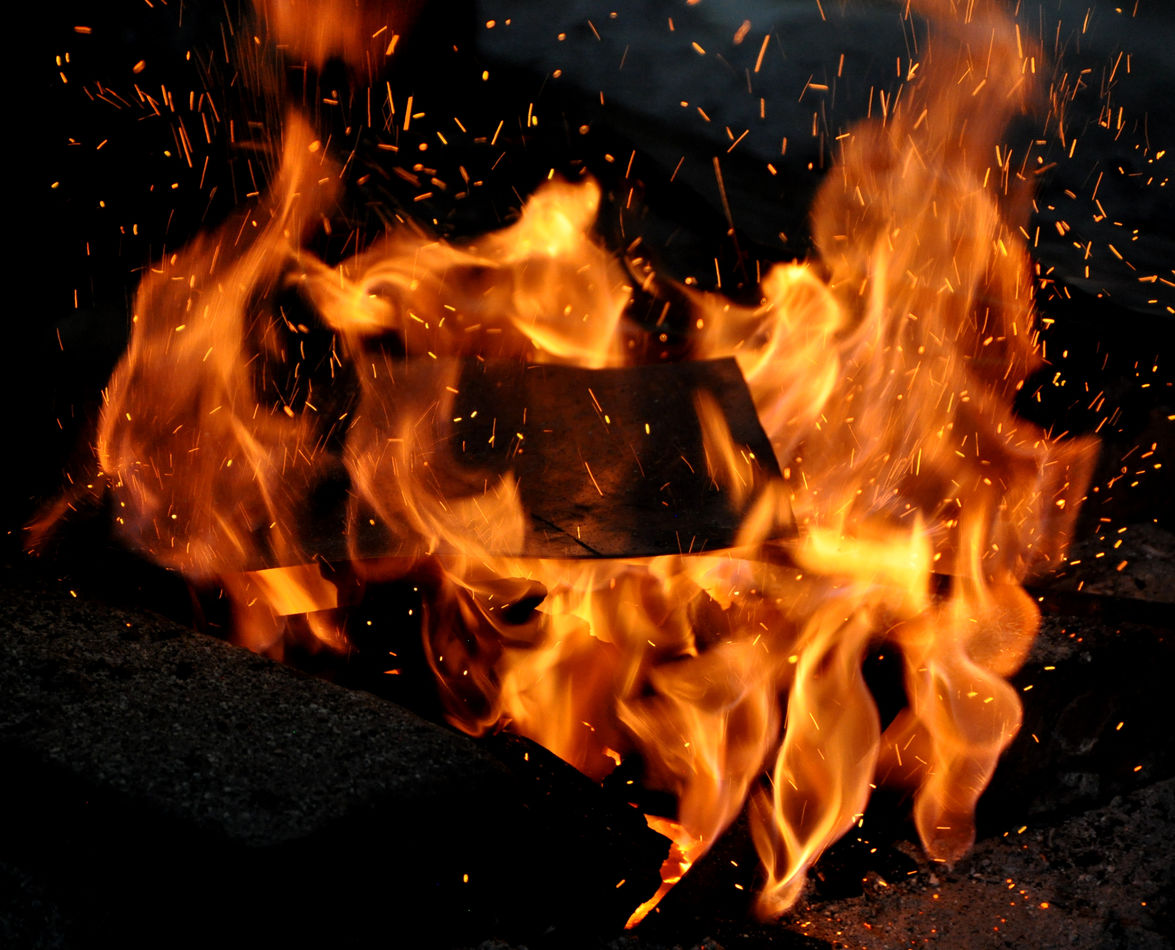
(Download)
3 - The worker is adding finishing touches on a decorative silver piece by hand, while holding the metal with his toes
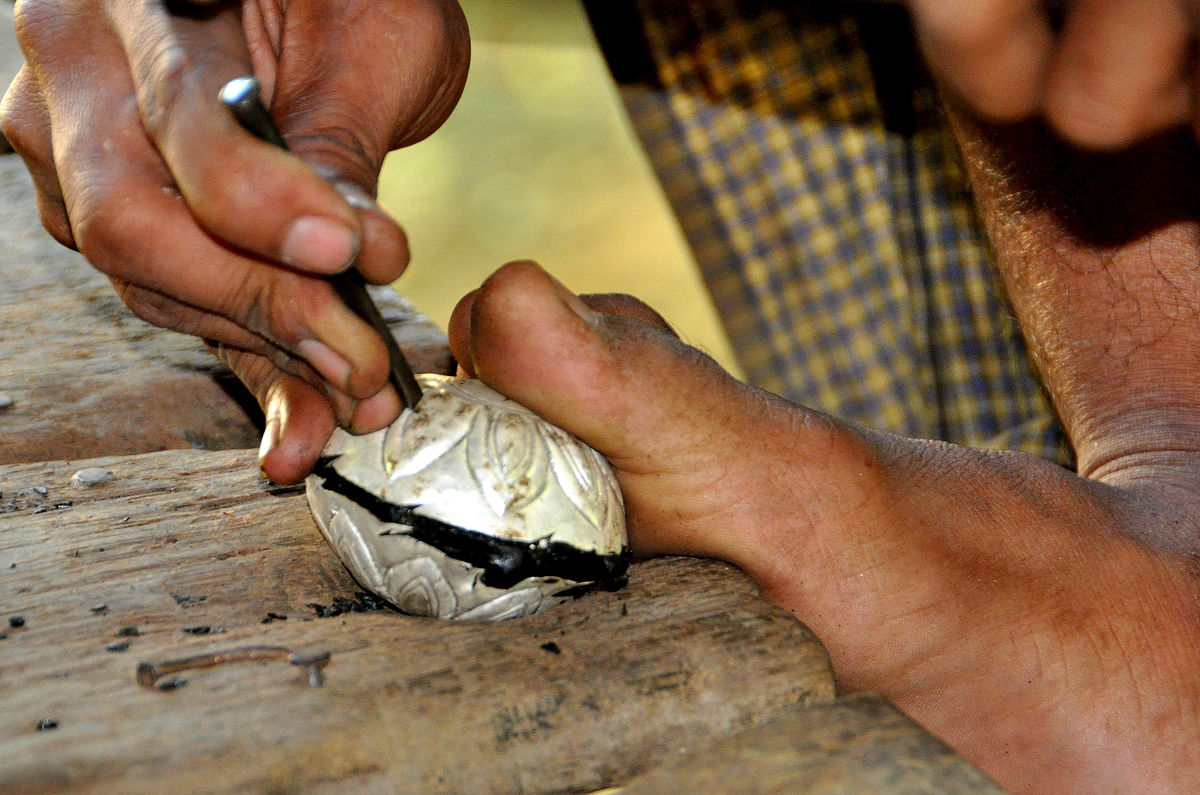
(Download)
4 - Visiting King Galon Gold Leaf Company: A worker rhythmically pounding a "cutch" holding over 100 thin, small gold pieces set at an angle between the two sticks against a stone block between his feet
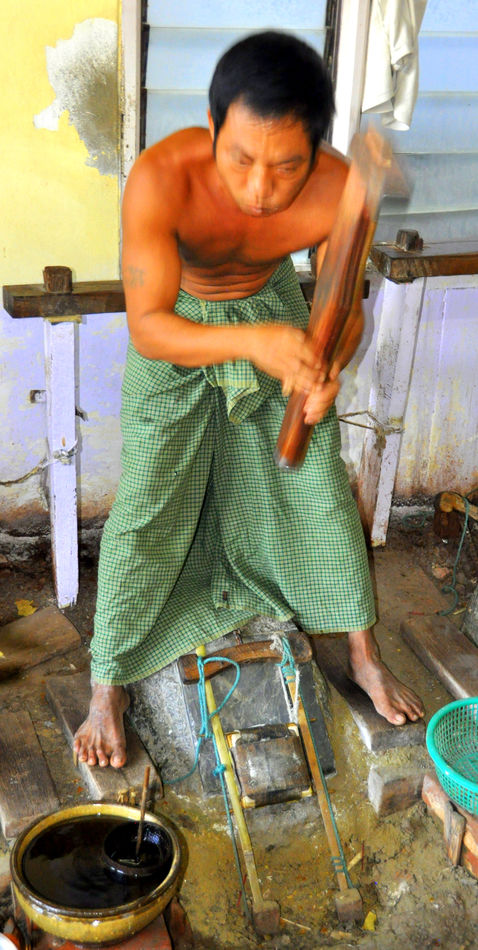
(Download)
5 - Another worker displaying a cutch of gold leaves readied for pounding
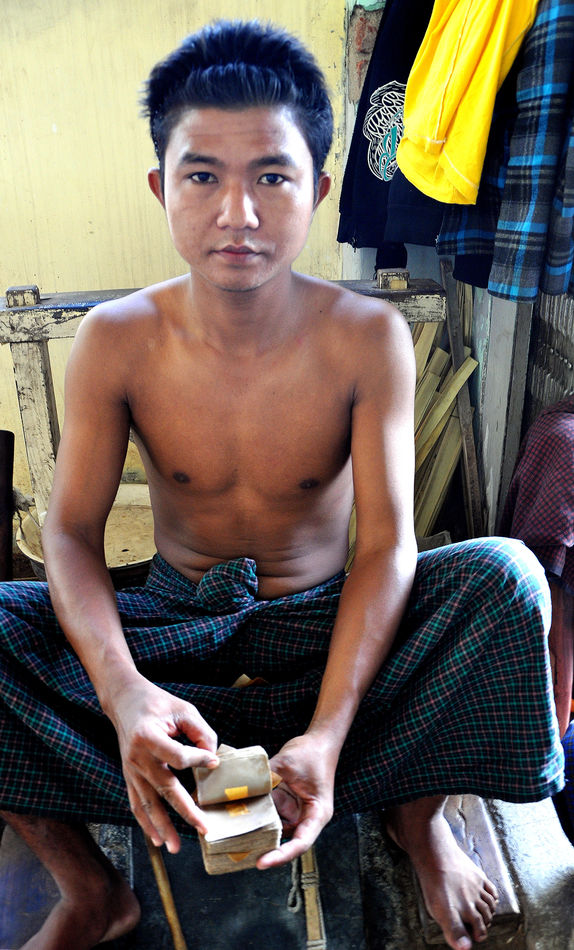
(Download)
6 - Close-up view of this "cutch" of gold leaves thinner than a hair
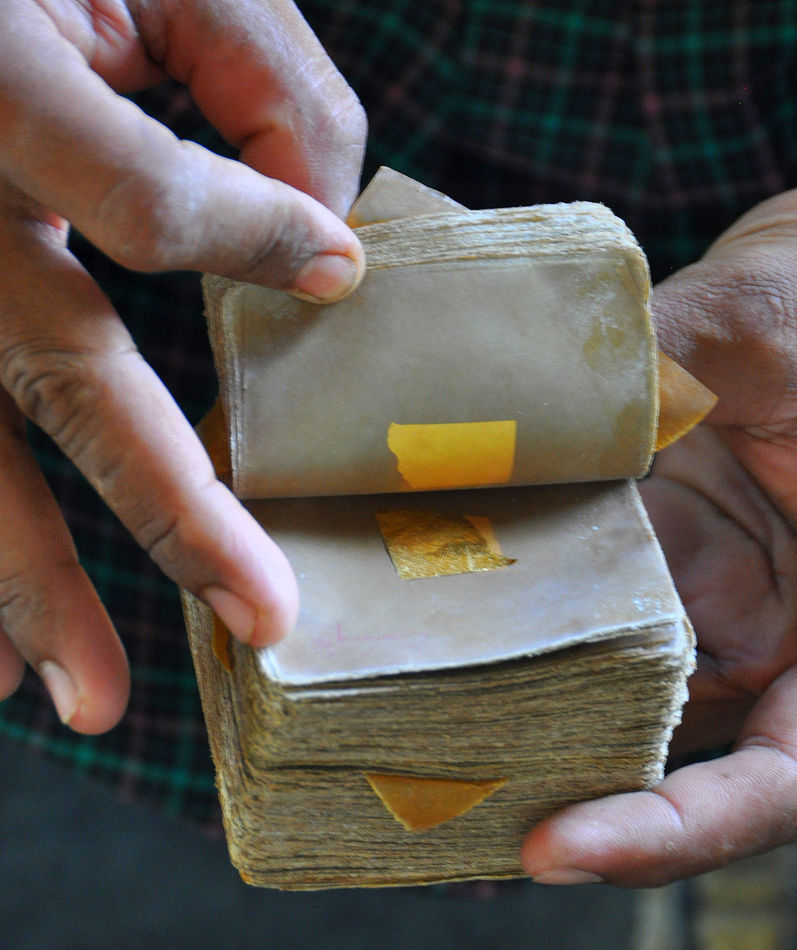
(Download)
7 - The pounded thin gold leaves are cut, pasted to size and assembled into small packets of 25 pieces for sale
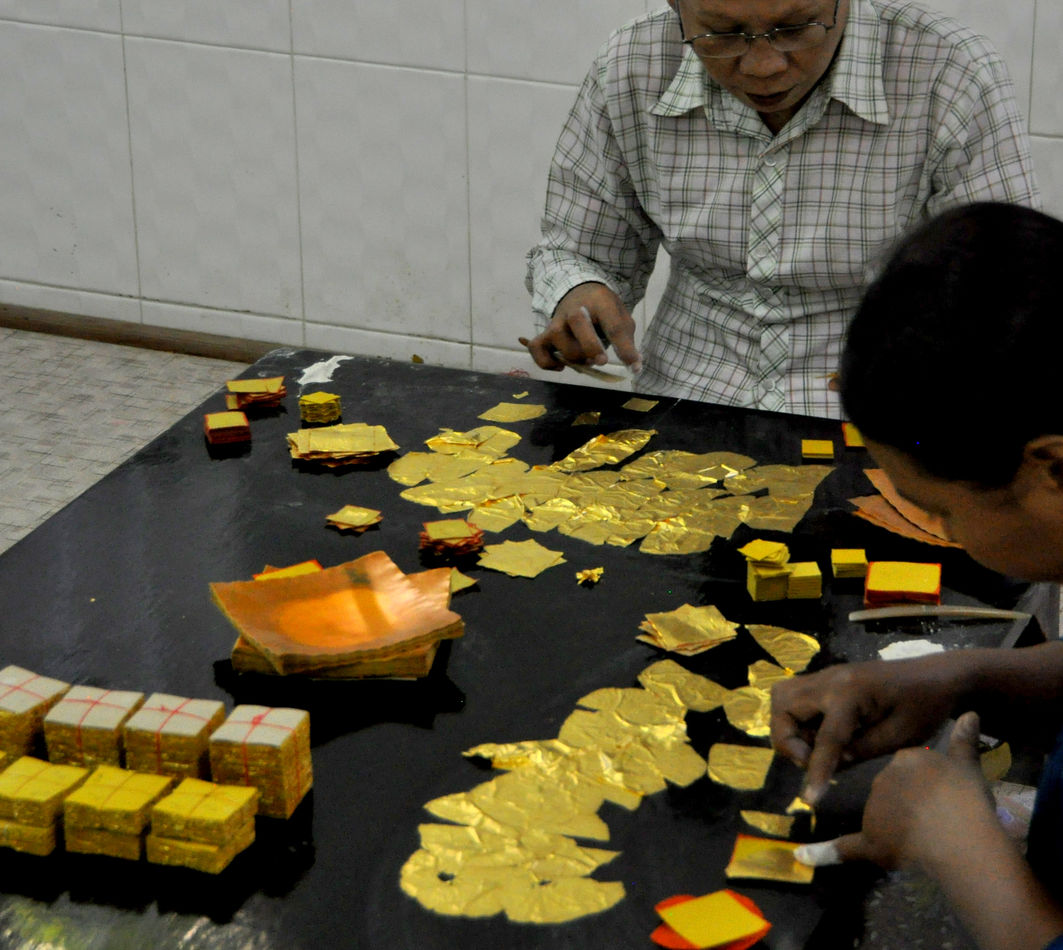
(Download)
8 - Simple but attractive entrance gate to the Sagaing Hill Restaurant

(Download)
9 - Lunch at the Sagaing Hill Restaurant: Pork curry Sagaing Hill style
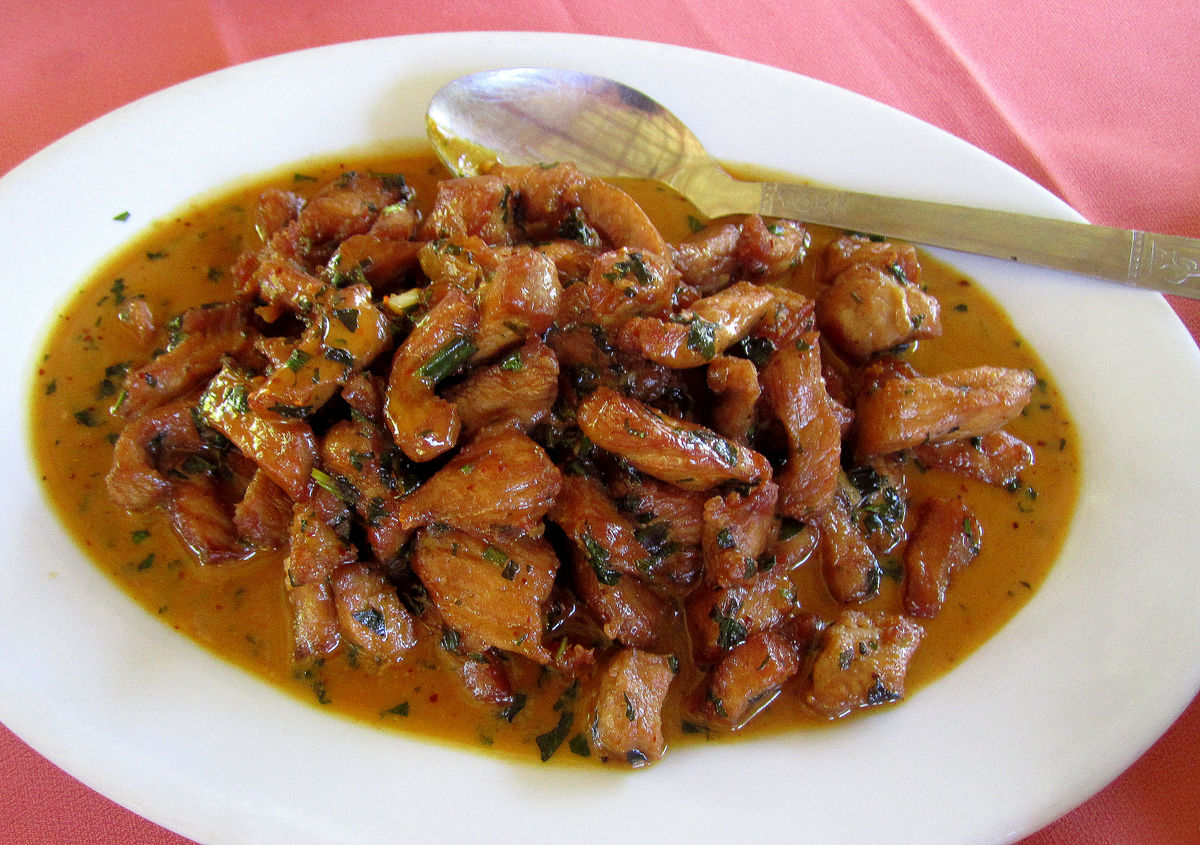
(Download)
10 - Yes, Myanmar does produce wine: A very passable Aythaya red wine from the hills near Inle Lake
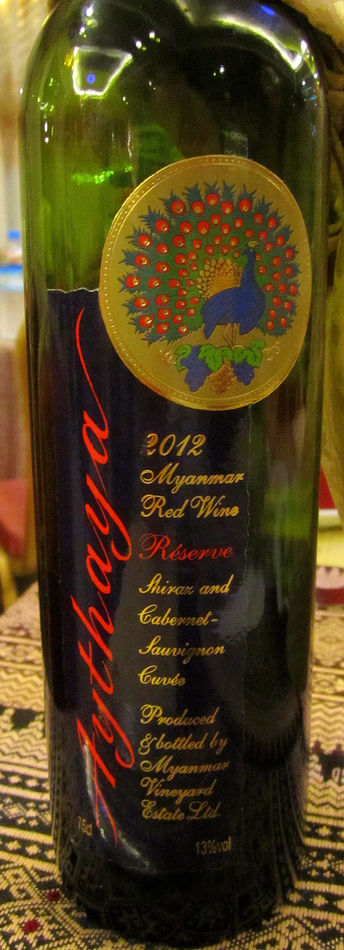
(Download)
Apr 10, 2022 10:58:52 #
For your reference:
11 - Trip map of the Myanmar segment of our tour
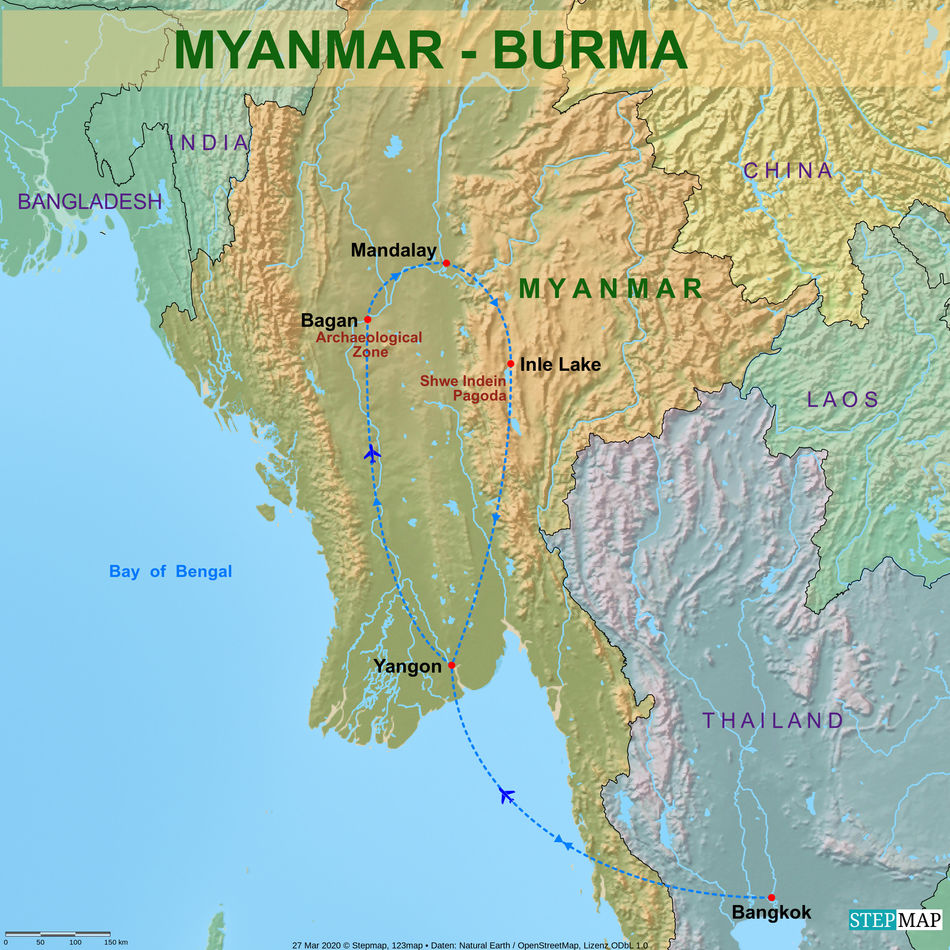
(Download)
12 - Map of the sights within Mandalay
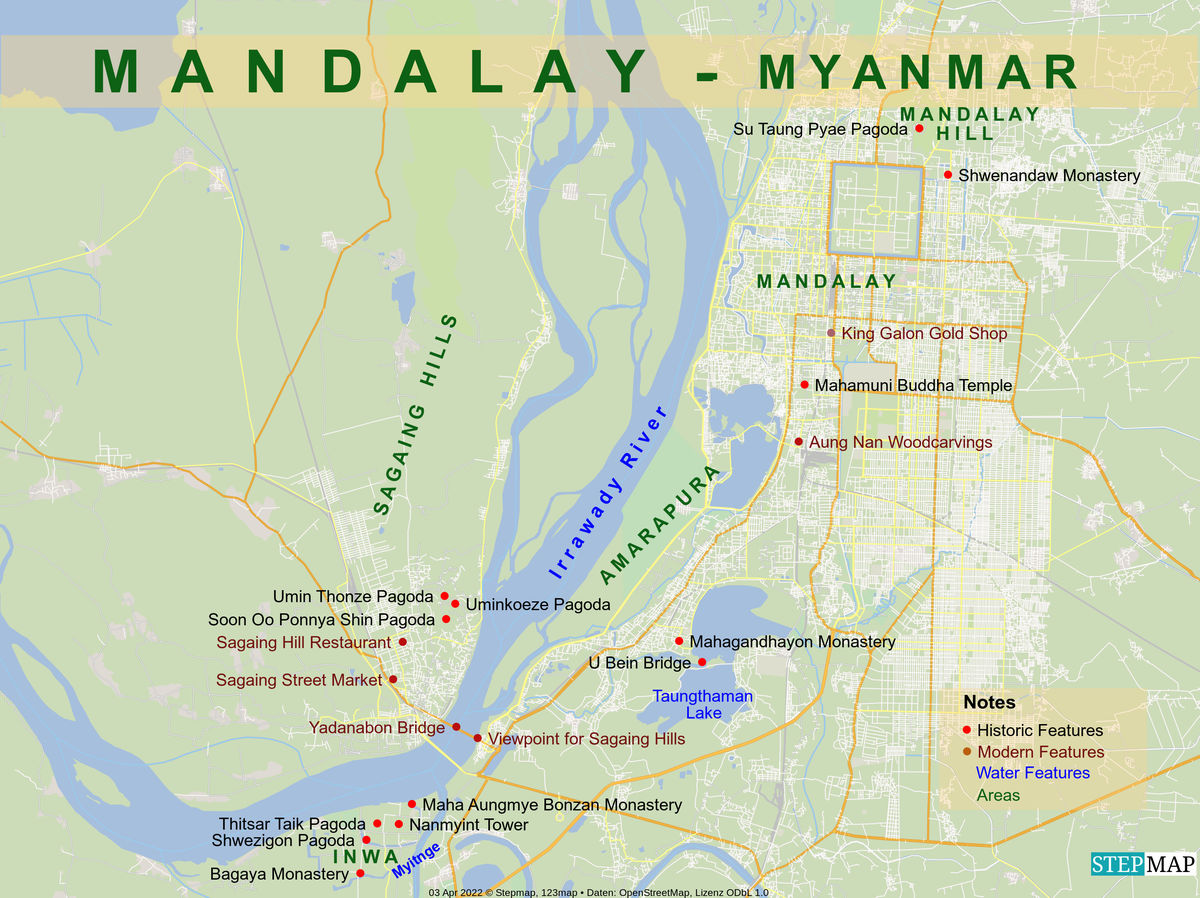
(Download)
Apr 10, 2022 11:01:00 #
A varied, well photographed set that was very instructive, Joe! I really like your capture of the fire.
Apr 10, 2022 11:23:29 #
You go to faraway places with your camera and take the viewer along with your maps and pictures. Thanks.
weberwest wrote:
For your reference:
Apr 10, 2022 11:29:11 #
Apr 10, 2022 11:31:11 #
Apr 10, 2022 11:57:18 #
Apr 10, 2022 12:01:56 #
Apr 10, 2022 12:12:08 #
UTMike wrote:
A varied, well photographed set that was very instructive, Joe! I really like your capture of the fire.
Thank you Mike, glad you enjoyed these photos and the information, I found it very interesting how they manually produced these ultra-thin gold leaves.
Apr 10, 2022 12:12:46 #
anotherview wrote:
You go to faraway places with your camera and take the viewer along with your maps and pictures. Thanks.
Thank you anotherview for looking in on the tour again and your kind comment.
Apr 10, 2022 12:13:24 #
kpmac wrote:
Artistry Eastern style. Great set, Joe.
Thanks Ken, glad to hear that you enjoyed this set.
Apr 10, 2022 12:14:59 #
Apr 10, 2022 12:15:33 #
NMGal wrote:
Excellent and informative.
Thanks Barbara, I am happy to hear that you enjoyed this set.
Apr 10, 2022 12:16:20 #
jaymatt wrote:
Really enjoyed seeing these!
Thank you John, glad you enjoyed these "production" shots!
Apr 10, 2022 12:34:49 #
Very interesting and an enjoyable set of these people and their work! I too like the fire images and #2 is a great shot! What I find really impressive, is the ways these processes are performed. It doesn't seem to have changed much, through many generations I would imagine. The most incredible shot, is the man hand working the silver piece using not one, not two, but three appendages!! I am glad you didn't exclude these images Joe! They tell a very interesting story!
Rob
Rob
If you want to reply, then register here. Registration is free and your account is created instantly, so you can post right away.







